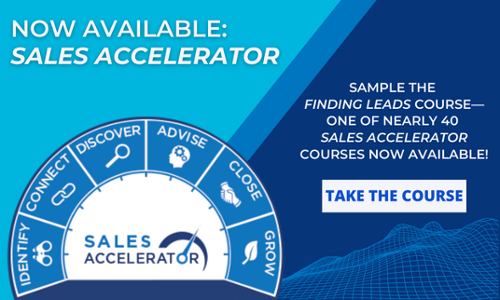 Editor's Note: This post was originally published on Liveplan.com.
Editor's Note: This post was originally published on Liveplan.com.
The longer a sales proposal sits, the less likely it is to convert to an actual sale.
The trouble with these stalled proposals is that you could have 100 potential sales stuck in limbo, but you can’t use those possible sales to pay your real bills. A bloated sales pipeline can start to have a real impact on your company’s cash flow if you’re not careful.
The underlying problem often isn’t what you might assume. It’s not that you or your team aren’t turning prospects into clients—it’s that your process allows too much bloat in the sales pipeline.
Somewhere in your sales funnel, you have a logjam. Unless you find out where it is, you’ll be stuck hoping and praying that the sales proposals in your system eventually work their way out into a paying conversion. Otherwise, you’ll be left with little revenue to show for your efforts.
What causes sales pipeline bloat?
Before jumping into the remedy for sales pipeline bloating, I want to talk a little about some common reasons for it.
In many cases, the core problem is that your company is measuring sales the wrong way. For example, you concentrate on how many proposals are “out there” just dangling, or talk about raw numbers of cold calls made.
Instead, you should be focusing on:
- Examining new sales-qualified leads coming in or qualified opportunities
- The conversion rate of leads that turn into opportunities
- The percentage of deals that close
- The breakout of new versus repeat business every week
Tracking each of those metrics will help you spot bottlenecks in your pipeline, and help you manage your business better. How can keeping track of these figures help ease the bloat?
Let’s say you notice qualified opportunities are lagging. In this situation, your lead intelligence may be nonexistent, resulting in fewer appointments per week. Fewer appointments naturally flow into lower conversion rates. Therefore, your new sales may be awful even though your repeat buyer sales are off the charts.
Numbers are your friends because they don’t lie. The deeper you explore each touchpoint in your funnel, the faster you’ll find the issues. That’s when you can get down to business and banish the bulk.
How to create a sales protocol that deflates the bloat
Eager to get rid of that bloated sales pipeline? You’re about to discover the fastest way to take control.
Chances are good that you’re focused on the pitch and close. Instead, concentrate on generating a rhythm that puts prospects’ desires first. Be willing to ask questions and learn more about what they’re really trying to accomplish. That way, you can guide potential clients smoothly and repeatedly through the funnel to predictable “yes” responses.
1. Optimize your website to court qualified prospects
First, identify your ideal qualified prospects. You’ll spin your wheels if you go for every individual who seems to be a possible buyer. Most supposedly “low-hanging fruit” prospects aren’t ready to have a discussion, let alone sign on the dotted line, which can be a cause of pipeline bloat. It can also lead to inefficiencies in the office and frustrated salespeople.
Rather than knocking on dozens of doors in the hopes one will swing open, use technology to your advantage. Most warm prospects begin their search for partners (you!) online, and they contact the thought leaders they find. You don’t have to wait for them to connect with you, either. Start focusing on the ripest ones who are worth your business development efforts.
Remember: More than two-thirds of them will conduct due diligence on your company after you make them aware of your presence. So be sure their opinion is based on a thorough, attractive website that serves as a strong, engaging resource guide.
This guide can help you think through all the elements of a customer-focused site. It’s geared toward a specific type of business, but the advice is useful no matter what your company sells.
2. Explore new sources of viable prospects
Don’t just wait for people to stumble upon your website, though. Whether you’re just starting to build your business, or you’ve been around for 40 years, you should be constantly on the hunt for viable prospects.
A great place to look for new ones is LinkedIn. The platform makes it easy to find decision makers, glean insider details about prospects’ problems, learn historical data to leverage in future conversations, and much more.
3. Personalize your outreach
Sound like a good plan? Then start exploring the LinkedIn universe. When you’ve uncovered a few potential leads, don’t just call or send a quick email. Instead, plan your approach so it’s more likely to yield a positive response. Seek out commonalities between you and your prospect, then construct a personalized email asking to add him or her to your LinkedIn network. After he or she accepts, send an individualized thank-you note. Mention that, after looking over the prospect’s profile, you think it makes sense to have a short phone call.
Again, this may feel unusual if you’re accustomed to shooting first and aiming later, but it’s a logical, personalized way to begin a conversation. If you get the green light, offer a date and time, and don’t be late for your call. During the discussion, ask about the prospect’s business and don’t talk about your company’s greatness.
After you’ve respectfully taken up only the amount of time planned, see whether your prospect would be willing to talk further in person, over Skype, through FaceTime, or on the phone. Be assertive and let your prospect know you could help with some concerns he or she has; it will help him or her “opt-in” to continue the conversation.
4. Follow up with smart questions
At your next interaction, come to the table with ideas based on the information you learned from the prospect. Ask for feedback and collaborate on solutions—it will help you more authentically build rapport. Essentially, your prospect is helping to prepare your pitch; make use of all the knowledge you gain by taking notes and not dominating the conversation. This meeting isn’t about you—it’s about learning and looking for opportunities.
What happens if your ideas aren’t met with great fanfare? That’s O.K. and to be expected sometimes. You don’t need to have a wonderful solution, you just need to demonstrate that you understand the prospect’s problem. Get to the heart of your lead’s worries so you can rush in and propose a plan that will most likely get his or her buy-in.
5. Pitch your team—make it easy to say yes
Once an outline is in place, discuss why your business is the right one for the job. Explain how you handled similar issues, talk about the talented team you’re representing, and highlight the advantages of working with your organization.
If you’ve done everything well to this point, you should have no problem agreeing on a collaboratively developed proposal scope that includes expectations, timeline, and financial commitment. From that point, sign your contract and determine next steps clearly and thoughtfully.
Sound too good to be true? It’s definitely doable, but it takes work and commitment.
To be sure, this protocol involves upfront planning and demands a significant amount of communication. However, one thing’s clear: It stops bloat from mucking up your system. And there’s no better feeling than evicting the junk clogging your sales pipeline.



